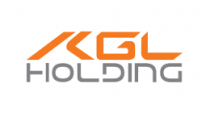Insights on the 3D Printing Filament Global Market to 2026 - Featuring 3D Systems, Arkema Group and BASF Among Others - ResearchAndMarkets.com
The "3D Printing Filament Market - Growth, Trends, COVID-19 Impact, and Forecasts (2021 - 2026)" report has been added to ResearchAndMarkets.com's offering.
The market for 3D printing filament is expected to grow at a CAGR of greater than 12% globally during the forecast period.
Companies Mentioned
- 3D Systems, Inc.
- Arkema Group
- BASF SE
- Clariant
- CRP TECHNOLOGY S.r.l.
- Dow
- DSM
- ENVISIONTEC, INC.
- EOS
- Evonik Industries AG
- HP Development Company, L.P.
- Materialise
- SABIC
- Stratasys Ltd.
Key Market Trends
Increased Demand from the Aerospace & Defense Segment
- Based on end-user industry, the aerospace and defense industry is estimated to lead the market, on account of increasing application areas, growing investments, and technological advancements.
- The plastics segment is anticipated to lead the 3D printing filament market in the aerospace sector, owing to its superior properties such as lightweight nature. Amongst plastics, ABS and PLA types are the most consumed because of their availability and cost-effectiveness. Plastic filaments are widely used in high-precision manufacturing of trolleys, ducting, and fittings
- The growth in the commercial aerospace market is likely to lead to the development of aircraft production and maintenance programs in emerging countries.
- The demand for the commercial aircraft is expected to more than double over the next two decades. To meet this demand, the number of jet airplanes is likely to nearly double to 47,000 airplanes, at an average annual growth rate of 3.3%. According to Boeing, in order to support this fleet, there is a need for more than 41,000 new deliveries, which are valued at over USD 6 trillion, for growth and replacement over the next 20 years.
- Owing to all the above-mentioned factors for 3D printing filaments, its market is expected to grow rapidly over the forecast period.
Asia-Pacific Region to Dominate the Market
- The demand for 3D printing material is witnessing significant traction, as a result of decreasing price and rapid acceptance of 3D printing technology from prototyping, product designing, and concept modelling to final product manufacturing.
- The growth is attributed to early adoption and development of advanced 3D printing industry complemented by the strong presence of manufacturers in the region.
- The aircraft parts and assembly manufacturing sector in the country is growing at a rapid pace, with the presence of over 200 small aircraft part manufacturers. Major manufacturers are concentrated in Nanchang, Shanghai, Chengdu, Xi'an, Harbin, Shijiazhuang, and Shenyang. The Chinese aerospace policy represents one of the most comprehensive attempts to enter the top levels of aerospace development and production. China is expected to be the world's largest single-country market for civil aircraft sales over the next 20 years.
- Moreover, in 2015, KAI won the KF-X project, Korea's next generation fighter jets. The Korean government plans to invest USD 17 billion in the KF-X program until 2025. Korean Air is active in providing MRO services for both commercial and defense aircraft. This is expected to increase the demand for market studied in the country during the forecast period.
- Asia Pacific has emerged as a manufacturing hub owing to an expanding consumer base as well as the continued rise in foreign investments. Hence, the regional market is expected to witness remarkable growth over the forecast period.
Key Topics Covered:
1 INTRODUCTION
2 RESEARCH METHODOLOGY
3 EXECUTIVE SUMMARY
4 MARKET DYNAMICS
4.1 Drivers
4.1.1 Growing Usage in Manufacturing Applications
4.1.2 Mass Customization Associated with 3D Printing
4.2 Restraints
4.2.1 High Capital Investment Requirement
4.2.2 Unfavorable Conditions Arising Due to COVID-19 Outbreak
4.3 Industry Value Chain Analysis
4.4 Porters Five Forces Analysis
4.4.1 Threat of New Entrants
4.4.2 Bargaining Power of Consumers
4.4.3 Bargaining Power of Suppliers
4.4.4 Threat of Substitute Products
4.4.5 Degree of Competition
5 MARKET SEGMENTATION
5.1 Type
5.2 End-user Industry
5.3 Geography
6 COMPETITIVE LANDSCAPE
7 MARKET OPPORTUNITIES AND FUTURE TRENDS
7.1 Adoption of 3D Printing Technology in Home Printing
7.2 Other Opportunities
For more information about this report visit https://www.researchandmarkets.com/r/i25iki
View source version on businesswire.com: https://www.businesswire.com/news/home/20210615005818/en/


